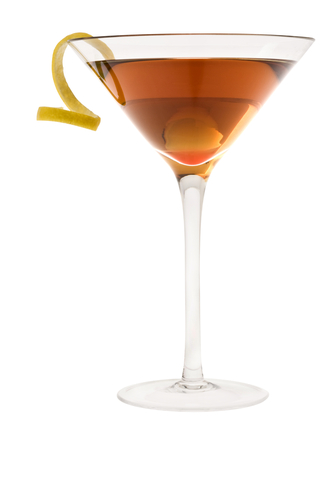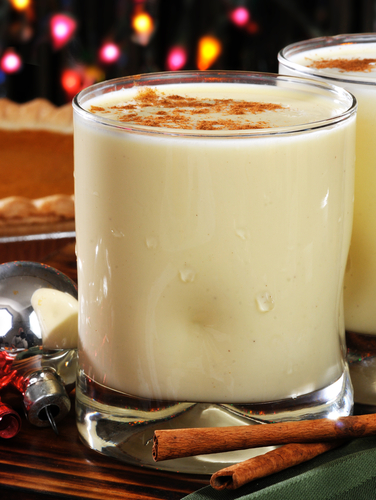Drink of the Week: The Chicago Sour
 I’ve confessed here before to the fact that even a pretty well made classic whiskey sour is not exactly my favorite concoction. Still, I’m starting to think that maybe the fault is with the particular recipes I’ve been sampling and that it is possible to make an entirely delightful standard whiskey sour…or maybe you need a little something extra. That’s the approach of this really kind of beautiful creation crafted for the high end bourbon, Angel’s Envy, by noted bartender Freddie Sarkis of Chicago gastropub Sable Kitchen and Bar.
I’ve confessed here before to the fact that even a pretty well made classic whiskey sour is not exactly my favorite concoction. Still, I’m starting to think that maybe the fault is with the particular recipes I’ve been sampling and that it is possible to make an entirely delightful standard whiskey sour…or maybe you need a little something extra. That’s the approach of this really kind of beautiful creation crafted for the high end bourbon, Angel’s Envy, by noted bartender Freddie Sarkis of Chicago gastropub Sable Kitchen and Bar.
As I noted in an earlier post, Angel’s Envy is bourbon for serious bourbon lovers that is finished in port wine caskets, and the fact that they sent me a free bottle hardly influences my opinion at all! This creation, which uses just a bit of plain old red wine, instead of the port featured in other Angel’s Envy recipes, is also delicious enough to make me forget the fact that I took myself off red wine several years back. It’s really, really good.
The Chicago Sour
2 ounces Angel’s Envy bourbon
3/4 ounce fresh lemon juice
3/4 ounce simple syrup
1 egg white
Red wine
Combine bourbon, lemon juice, egg white and simple syrup in cocktail shaker. Before adding ice, shake the contents vigorously to fully emulsify the egg white. Make sure your shaker is well sealed because egg tends to make plastic cocktail shakers want to pop open for some reason that a chemist or physicist could probably explain. Now add ice and shake again even more vigorously. Strain into a chilled cocktail/martini/champagne glass. “Float” — which I think means “lightly pour” — a very small amount of red table wine. Drink and toast Mr. Sarkis, who has come up with one mean cocktail.
***
 The recipe as promoted by Angel’s Envy doesn’t specify the type of red wine or the size of the egg — I used the white of a medium egg because medium eggs were on sale at my local supermarket a few days before along with an extremely cheap Cabernet that’s probably slightly below the quality of ordinary two buck Chuck and and exactly the same price. The result, nevertheless, was pretty magnificent. (Please note the usual raw egg caveats apply — the risk of contamination is very low, but people with certain health issues should use pasteurized eggs.)
The recipe as promoted by Angel’s Envy doesn’t specify the type of red wine or the size of the egg — I used the white of a medium egg because medium eggs were on sale at my local supermarket a few days before along with an extremely cheap Cabernet that’s probably slightly below the quality of ordinary two buck Chuck and and exactly the same price. The result, nevertheless, was pretty magnificent. (Please note the usual raw egg caveats apply — the risk of contamination is very low, but people with certain health issues should use pasteurized eggs.)
Regular readers will also note that I departed from my prior habit of using superfine sugar and water in preference to simple syrup because I’m feeling lazy and I found some for an acceptable price that was actually made with cane sugar. Still, I imagine you could substitute about a tablespoon of sugar and 1/2 an ounce of water and it would likely come out as tasty as anything else from our nation’s former second city, as saluted below by two Italian-American lounge singers of some note.
You can follow us on Twitter and Facebook for content updates. Also, sign up for our email list for weekly updates and check us out on Google+ as well.

 Despite the fact that many U.S. denominations frown on booze or ban it outright, it’s nevertheless no surprise that Christian imagery has found its way into the argot of whiskey distillers based in some of the most devout regions on the planet. “The Angel’s share” refers to a certain small percentage of whiskey that seeps into the wood in barrels and usually evaporates.
Despite the fact that many U.S. denominations frown on booze or ban it outright, it’s nevertheless no surprise that Christian imagery has found its way into the argot of whiskey distillers based in some of the most devout regions on the planet. “The Angel’s share” refers to a certain small percentage of whiskey that seeps into the wood in barrels and usually evaporates. The Whiskey Smash is probably one of the clearest examples of a drink rescued from complete obscurity by the ongoing
The Whiskey Smash is probably one of the clearest examples of a drink rescued from complete obscurity by the ongoing  It is time to correct an old oversight this Friday the 13th. It seems that way back on the second DOTW, in which I dealt with that sturdiest of
It is time to correct an old oversight this Friday the 13th. It seems that way back on the second DOTW, in which I dealt with that sturdiest of  I have a confession to make. Despite my enormous love of all things sweet and milk fatty, I was fully prepared to bale on what has to be the ultimate seasonal drink. I have to admit there were concerns for my waistline — you guys have no idea how much weight I gained as a child knocking back the carton based non-alcoholic stuff. Also, as I grew older, I usually was disappointed by the spiked nog I’d had at parties. Somehow, the booze always seemed to destroy the cheap and creamy charm of the store bought nog. It was like putting vodka in chocolate milk. (I’d rather have a shot and choco-moo chaser, thank you.)
I have a confession to make. Despite my enormous love of all things sweet and milk fatty, I was fully prepared to bale on what has to be the ultimate seasonal drink. I have to admit there were concerns for my waistline — you guys have no idea how much weight I gained as a child knocking back the carton based non-alcoholic stuff. Also, as I grew older, I usually was disappointed by the spiked nog I’d had at parties. Somehow, the booze always seemed to destroy the cheap and creamy charm of the store bought nog. It was like putting vodka in chocolate milk. (I’d rather have a shot and choco-moo chaser, thank you.)








